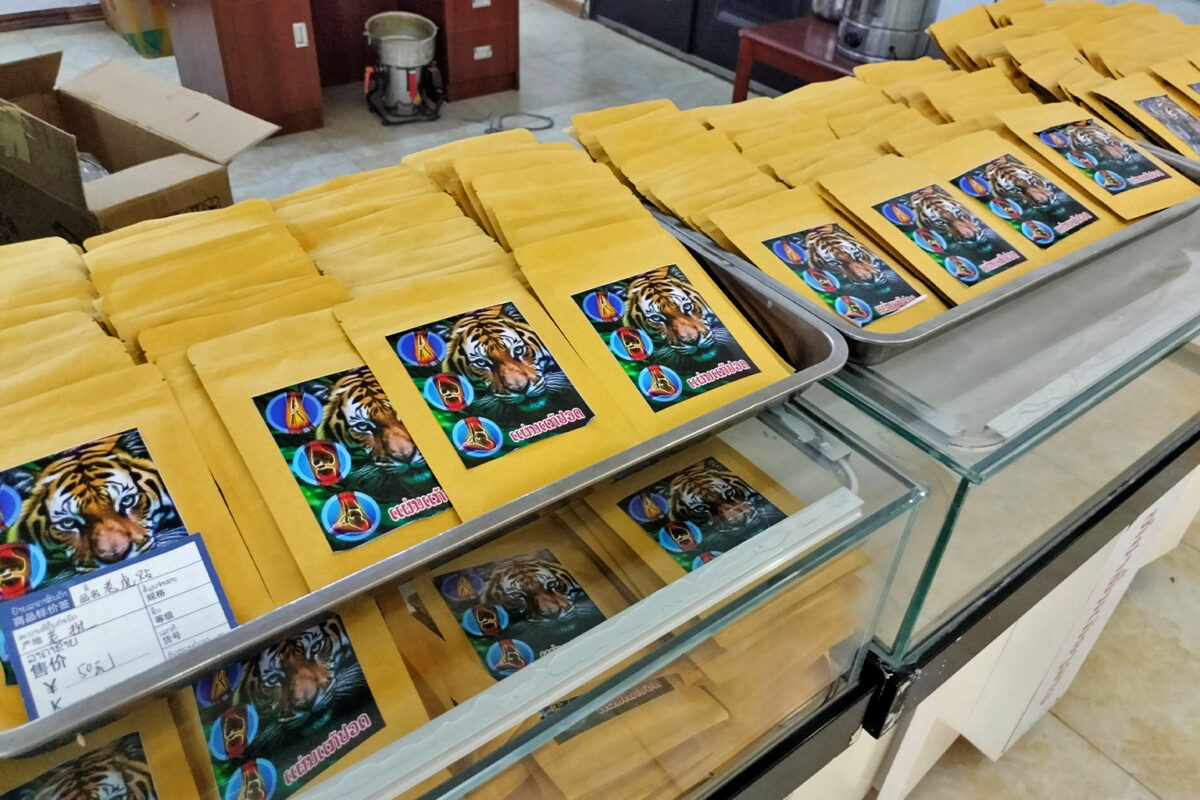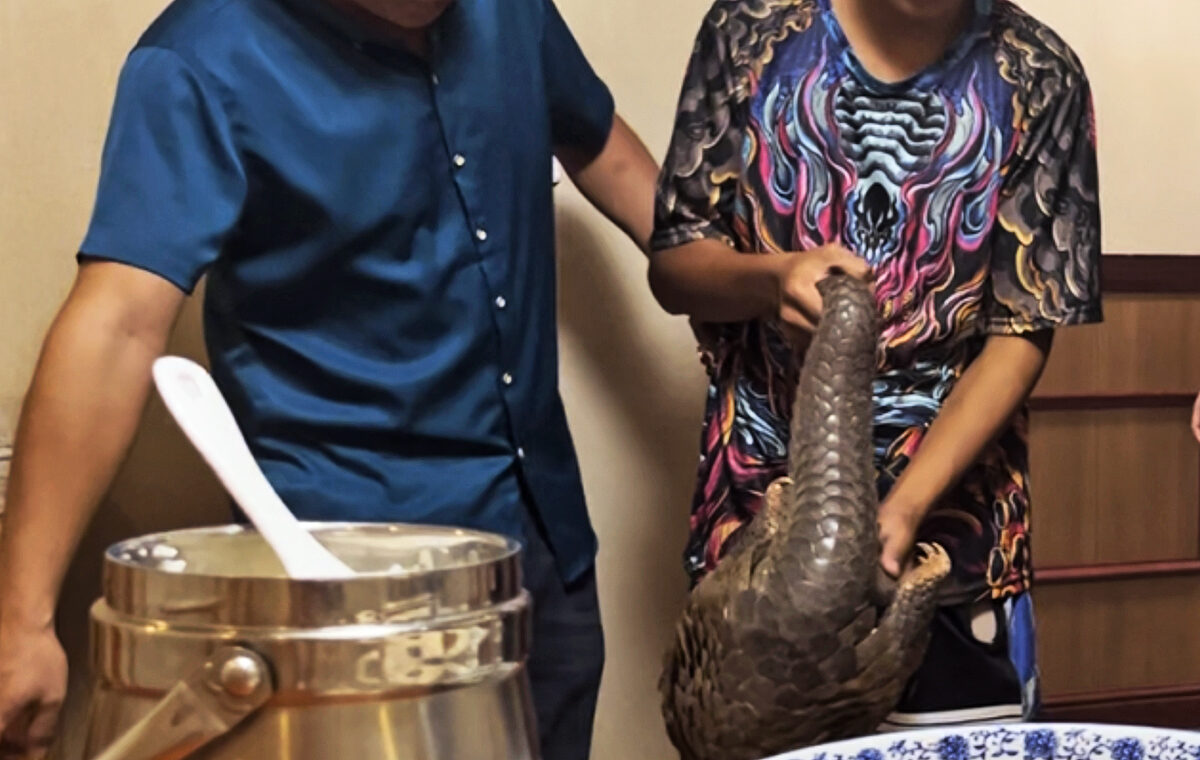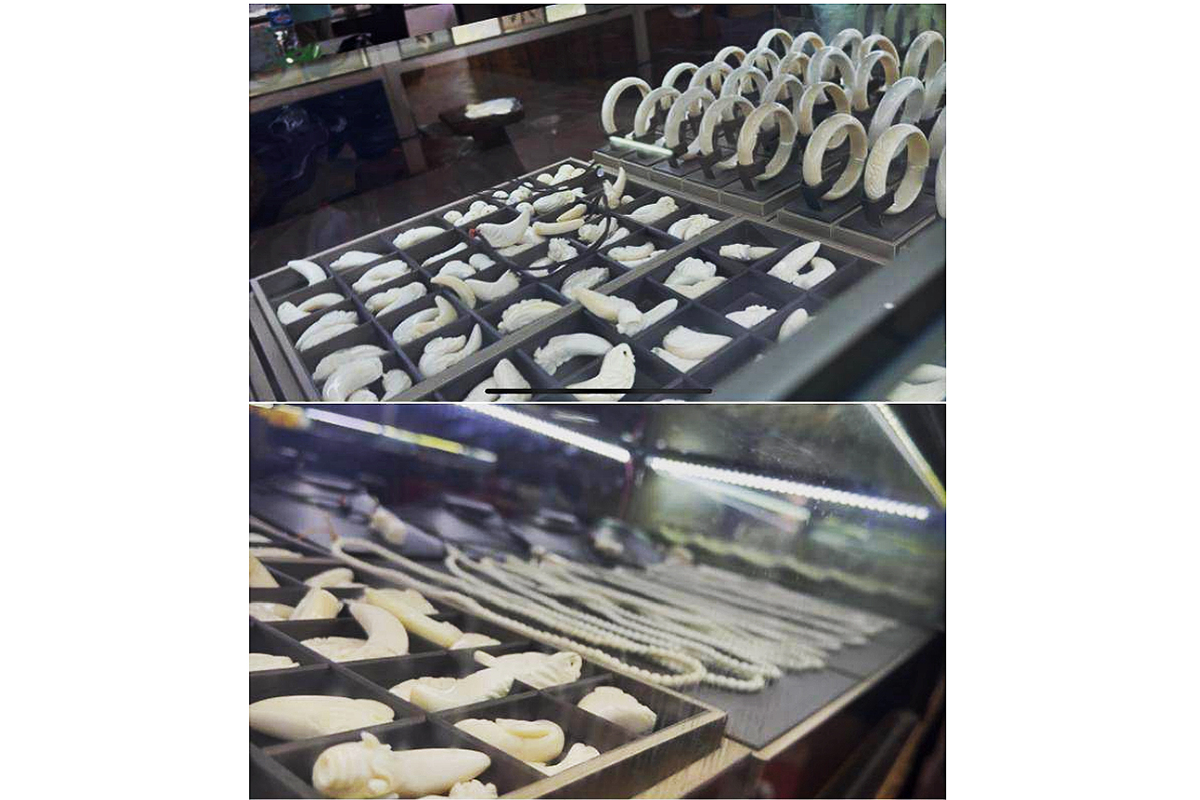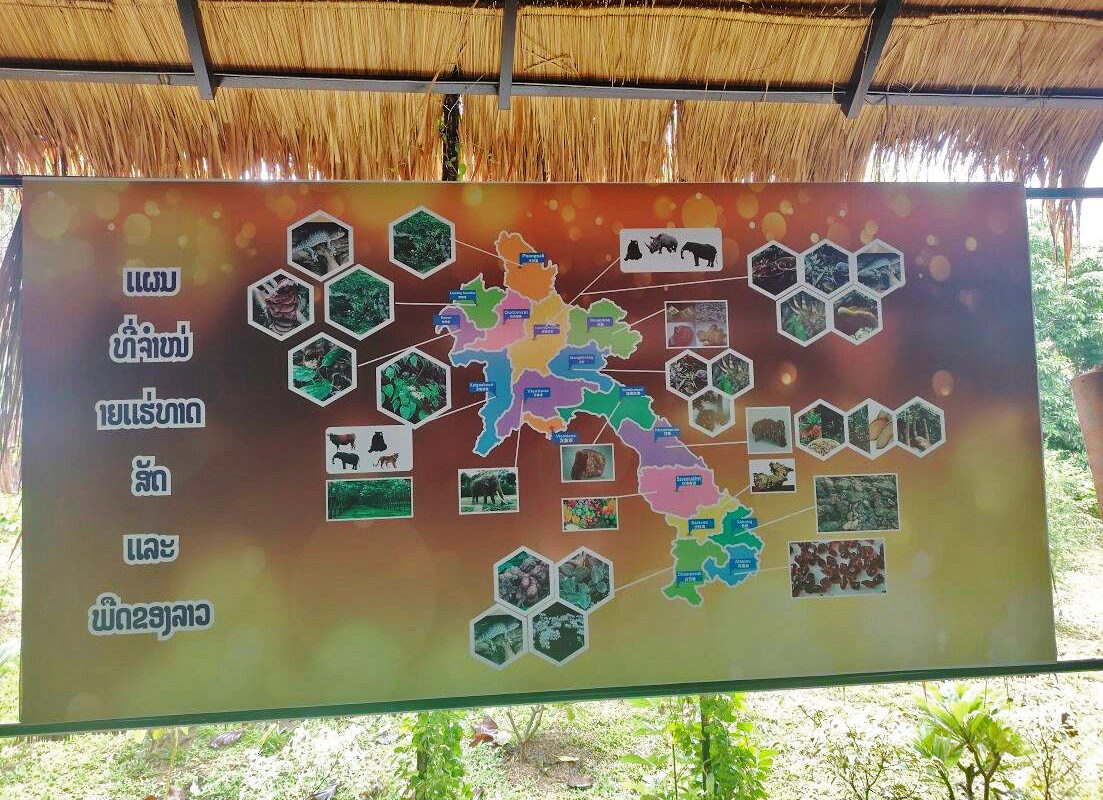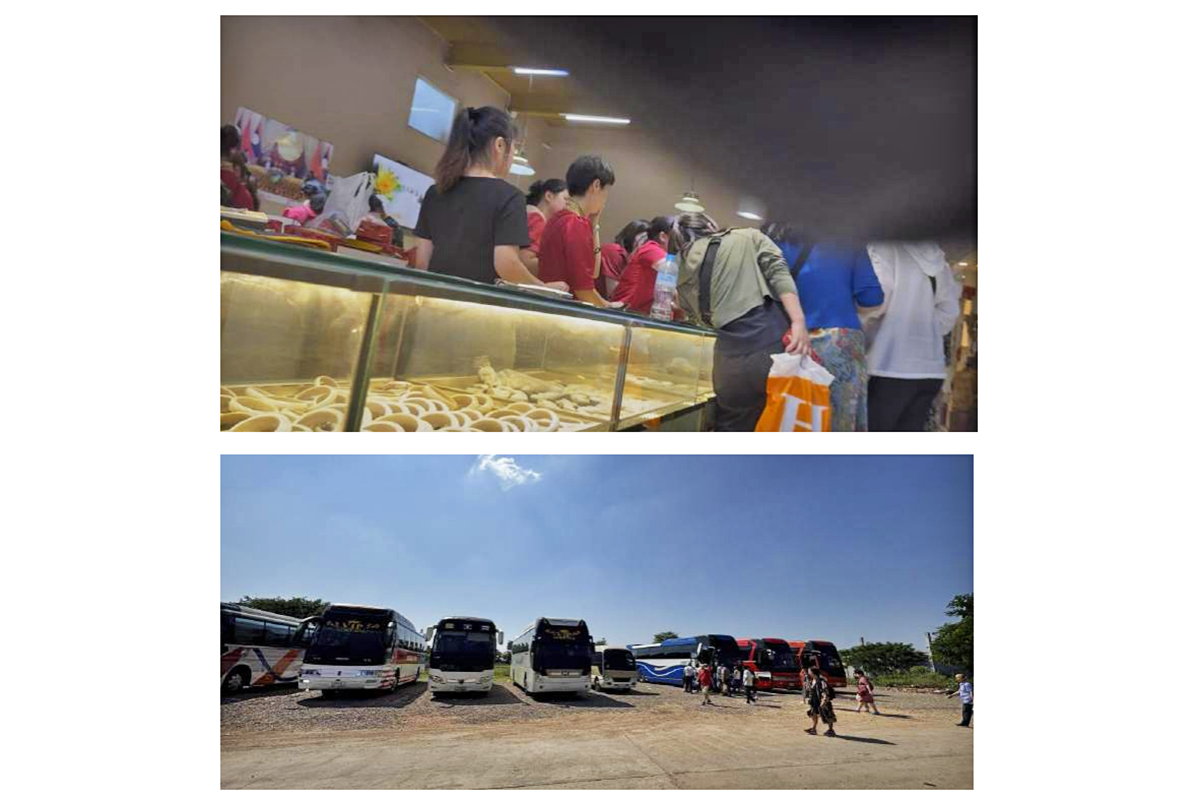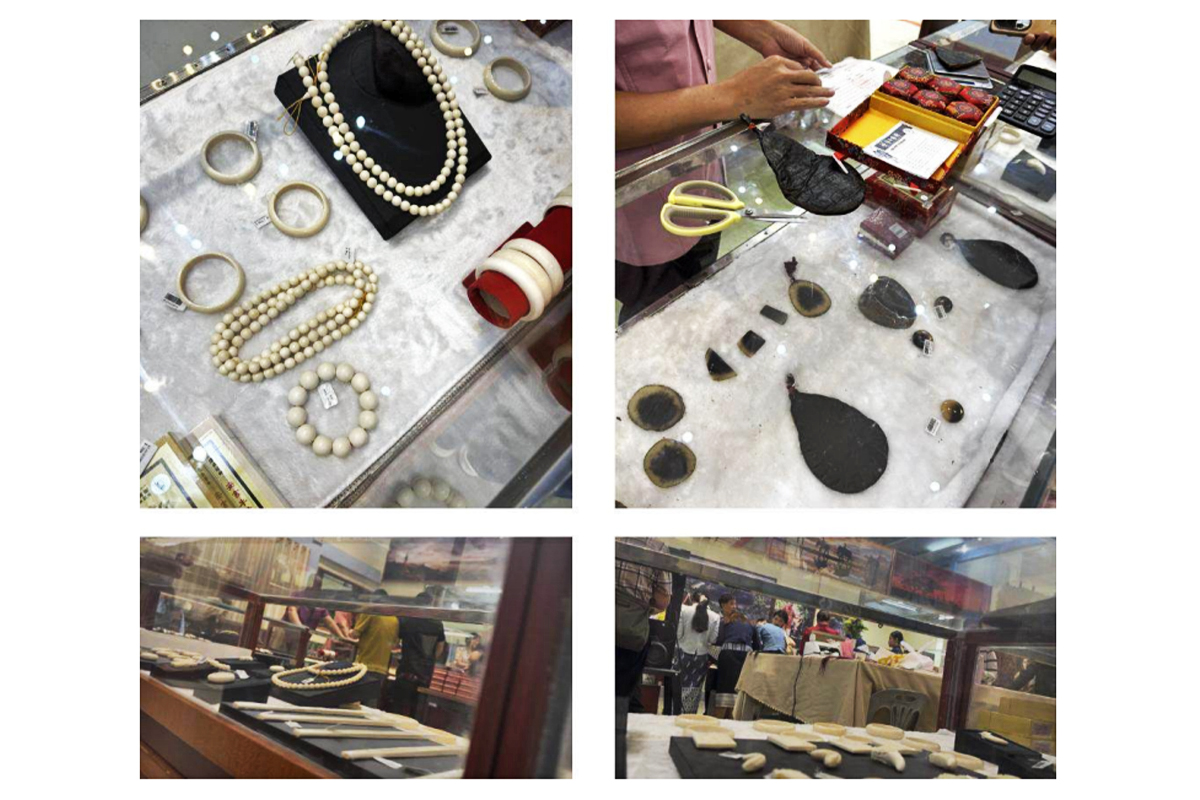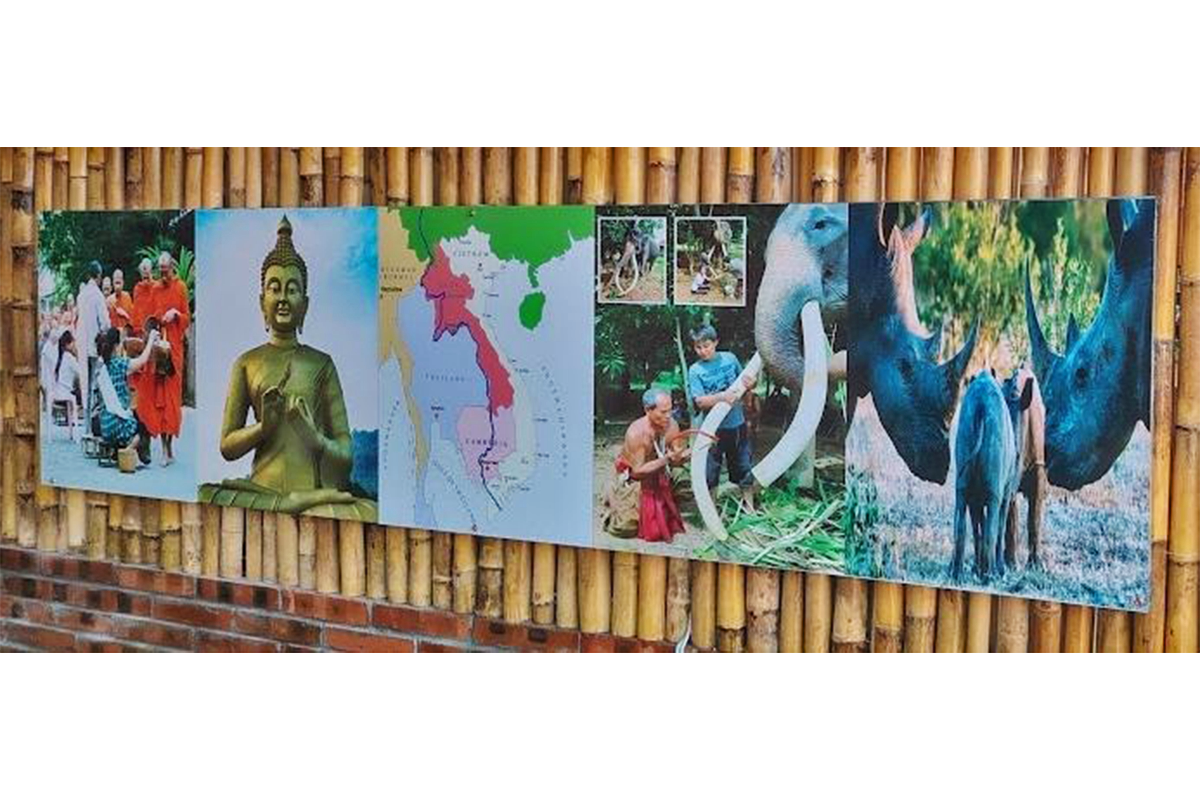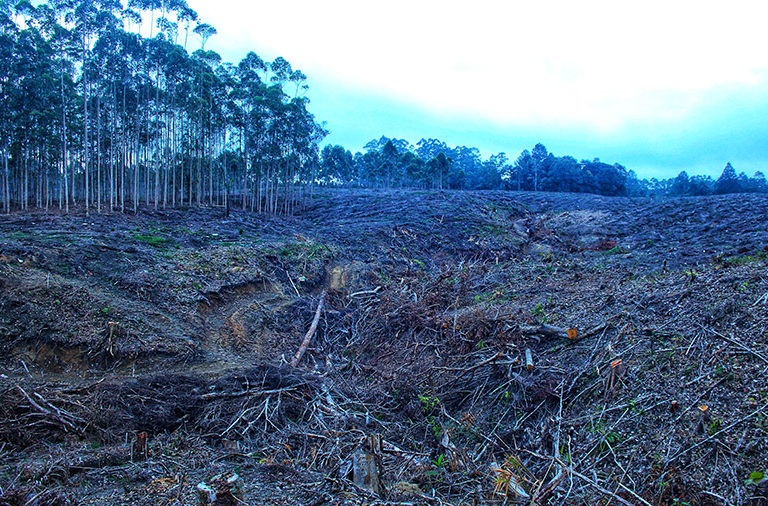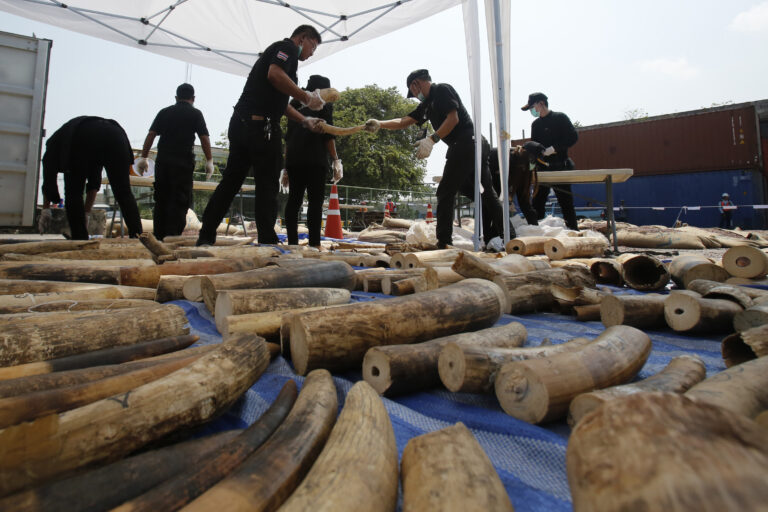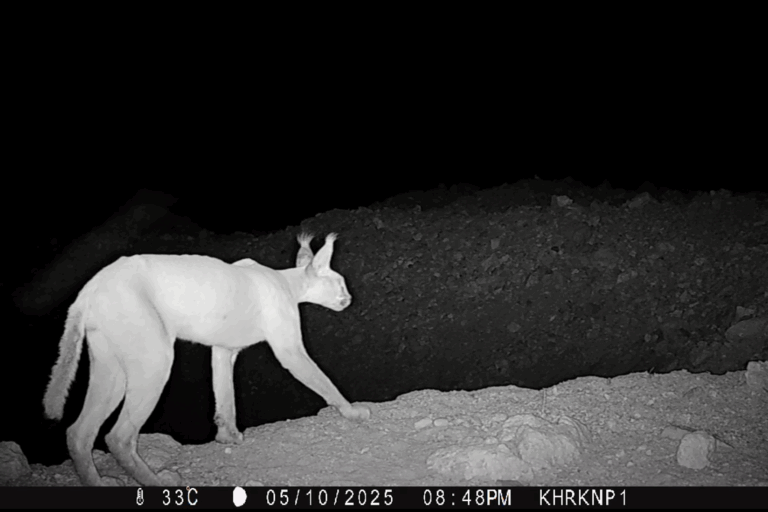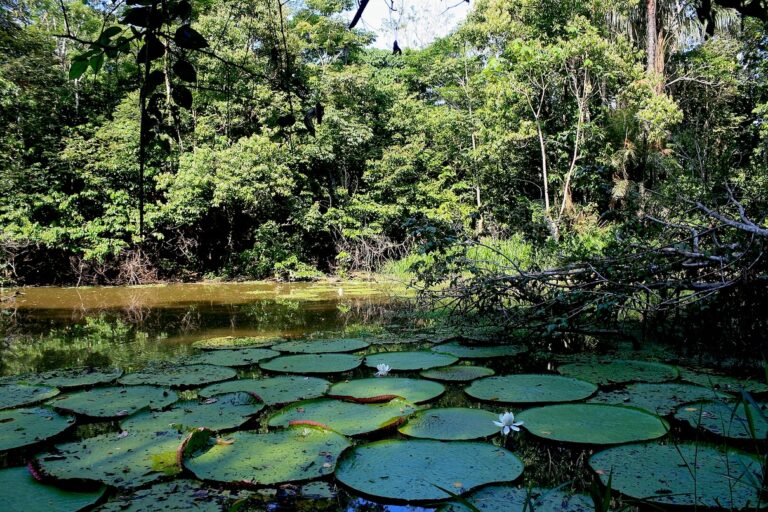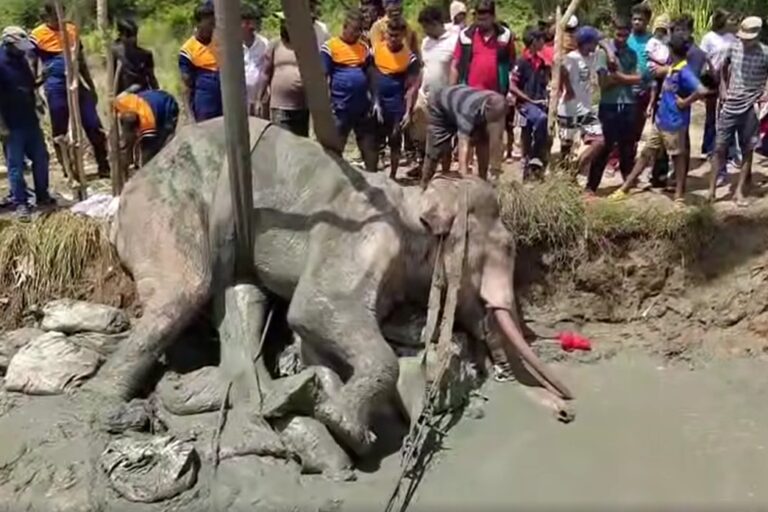- Secretive shops posing as cafés, museums and cultural experiences are selling illegal wildlife products such as ivory, rhino horn, bear bile, pangolin scales and tiger bones in Laos, often at inflated prices, specifically targeting elderly Chinese tourists.
- Since 2024, these shops have proliferated across the cities of Luang Prabang and Vientiane, many are guarded by armed men in military uniform, but access is reserved for Chinese tourists on pre-arranged package tours.
- This new business model for the illegal wildlife trade in Laos is estimated to be making tens of millions of dollars from the sale of products made from endangered species, but following Mongabay and NGO GI-TOC’s investigation, Laotian authorities have agreed to inspect.
LUANG PRABANG, Laos — “No coffee, no coffee,” repeated the security guard. His smile stood in stark contrast to his faded camouflage fatigues and the machine gun slung over his shoulder. Few cafés in the sleepy Laotian tourist town of Luang Prabang boast armed guards, but Kin Liao Coffee is not the average café.
While it’s unclear if Kin Liao Coffee actually serves coffee, the café situated on the side of the road near the Kuang Si waterfall has been found to illegally sell a wide array of ivory, rhino horn and bear bile products, as well as Angong Niuhuang Wan — a traditional Chinese medicine that is often manufactured in North Korea using powdered rhino horn.
Kin Liao Coffee is just one of more than 20 locations across Luang Prabang and the Laotian capital of Vientiane identified in a joint investigation between Mongabay and the Global Initiative Against Transnational Organized Crime (GI-TOC) as selling illegal wildlife products at scale. These shops appear to exclusively cater to Chinese tourists, specifically those visiting Laos on pre-arranged low-budget package tours.
The tours target elderly Chinese nationals, promising them all-inclusive trips to explore the historic ties between the two countries, often via the China-Laos railway. Upon arrival, tour groups are ferried from one shop to another, where sellers — mostly Chinese nationals themselves — use coercive and manipulative sales tactics to pressure tourists into buying illegal wildlife products, most of which are sold at inflated prices, the investigation found.
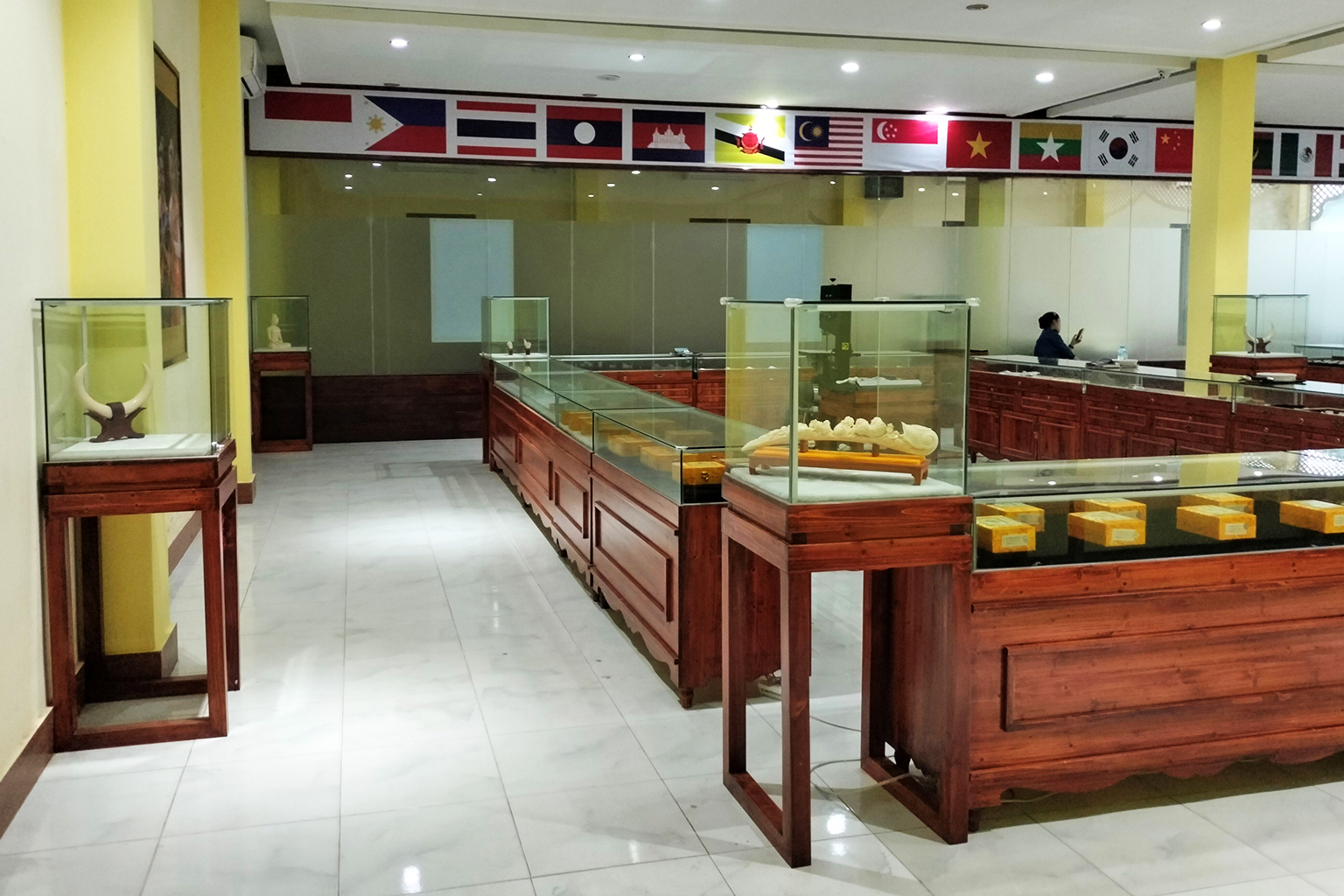
The tour companies are believed to take a 20-40% cut of the profits for their role in delivering an estimated 11,000 unsuspecting Chinese tourists to the shops each year. GI-TOC was able to identify 11 Chinese tour operators who lure tourists onto these trips and into these shops.
Putting a dollar value on such illicit trading is always difficult, given the range of factors, but the above-market rates that illegal wildlife products are sold for — coupled with the size and proliferation of the shops themselves — suggest that this emerging illicit business network could be worth tens of millions of dollars, as per GI-TOC’s analysis.
These shops, often spanning hundreds of square meters, first came to prominence in 2024 when Chinese undercover investigators working for Agent C Wildlife Initiative produced an unpublished report detailing the early onsets of this new model of illegal wildlife trade.
The report, seen by Mongabay, identified eight illegal wildlife shops in Luang Prabang and another four in Vientiane. However, the trade has massively expanded since then and, in 2025, Mongabay was able to independently verify the locations of 15 such separate shops that cater to vulnerable, elderly Chinese tourists
Several of these locations have been successfully identified in Laotian Ministry of Industry and Commerce records, which show that many of these businesses were registered in 2024, suggesting that there has been a recent expansion of the wildlife traders’ business model.
“With so many Chinese businessmen and tourists going into these developing countries in recent years, I actually feel such situations [are] similar in many countries,” said one investigator who worked on the Agent C report, who requested anonymity due to the sensitive nature of their work. “For example, [the] jaguar trade in South America, [the] rhino horn trade in Africa — when there is more visible local demand from these businessmen and tourists, and when the local law enforcement is weak, such [illegal wildlife trade] could increase.”
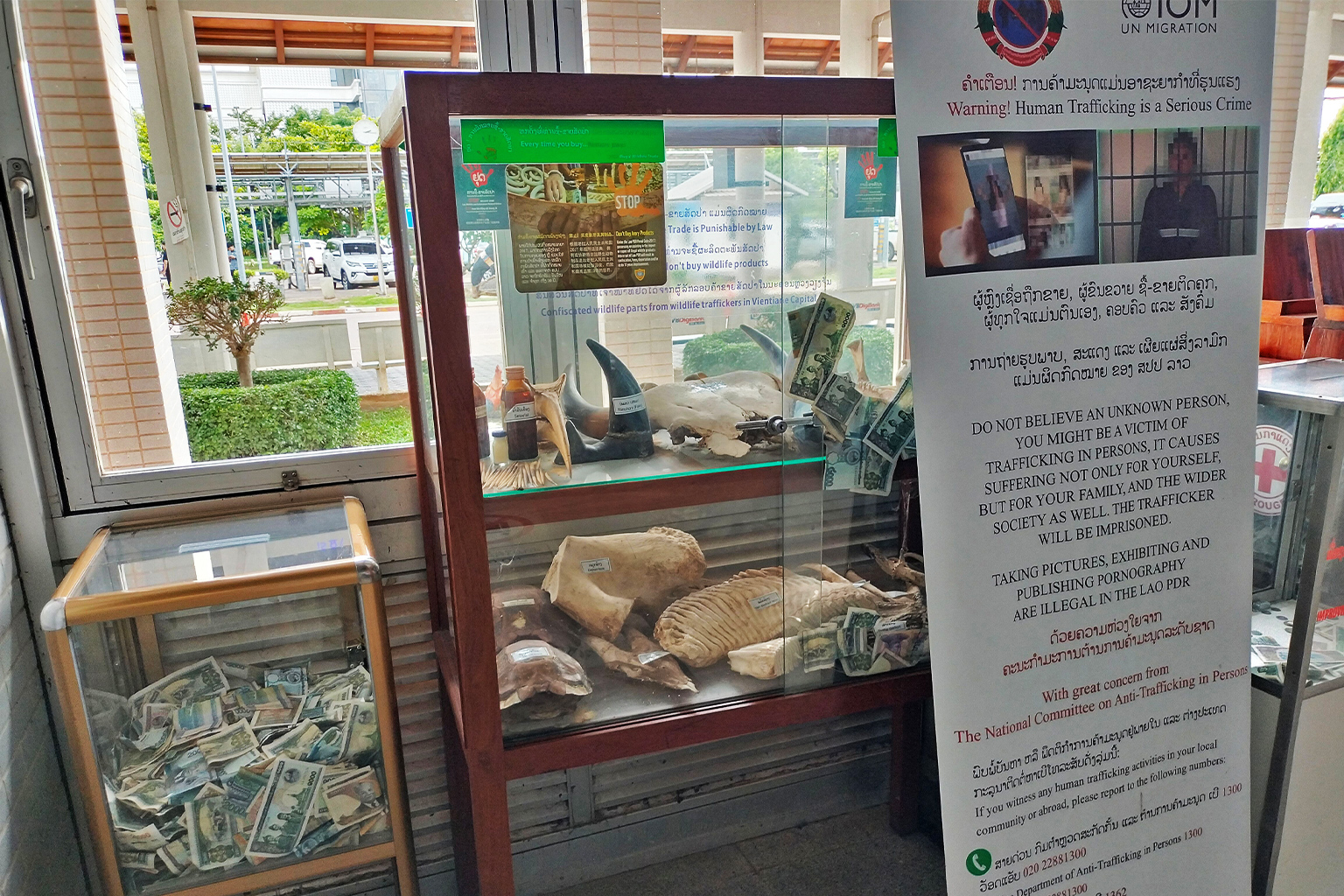
‘Misleading and criminal’
Inside the shops however, there is a manufactured sense of legality and legitimacy that helps part Chinese tourists with significant sums of money in exchange for illicit wildlife products.
“In Laos, elephants are deeply respected and considered sacred. When elephants reach adulthood, they tend to display behaviors such as knocking down trees, which is their way of dealing with the weight and discomfort of their tusks. This instinctive action sometimes injures them, leaving their heads bruised and bleeding. Observing this, we began studying ways to help elephants safely remove part of their tusks.”
This is an excerpt from a translated recording of the marketing speeches that preface Chinese tourists’ visits to illegal wildlife product shops across Laos.
Tourists are seated in a lobby, foyer or dedicated room — laden with chairs, photos of elephants being blessed by monks, as well as imagery of Chinese President Xi Jinping meeting various Laotian officials — before Chinese nationals, often pretending to be Laotians of Chinese descent, give marketing speeches invoking the legality, sustainability and conservation benefits of purchasing illegal wildlife products.
Throughout the course of the transcript, provided by Agent C, the seller goes on to claim that elephants grow uncomfortable with the weight of their tusks, so conservationists get the elephants drunk on fermented fruits. “After eating it, the elephants would fall into a sleep-like state, similar to how some people might feel after drinking. During this time, we could safely trim their tusks.”
According to this particular seller, this process happens “at least six times a year,” with the ivory tusks then stored in a pagoda and blessed by monks for a month before being sold, and “the proceeds go towards supporting the elephant foundation.”
By painting a picture of purchases not only being legal, but also supporting both elephant conservation and reducing poverty in Laos, sellers aim to pressure elderly Chinese tourists into paying inflated prices for ivory and other illegal wildlife products on the grounds that they could be used to save lives.
“Bear bile is used to treat internal injuries, expel blood stasis, and clear liver heat,” one seller was recorded telling a group of tourists. “It helps to cleanse the liver, improve vision, and detoxify the body. Traditional medicine in Laos is used by many people to maintain their health, especially since we often eat foods that are fried or oily.”
Angong pills are, according to the seller, used for treating heart attacks and strokes. “However, since 1993, the effectiveness of Angong has decreased significantly because they started using artificial substitutes for rhinoceros horn and other rare ingredients.”
The seller goes on to claim that, in 1995, China partnered with North Korea to produce Angong pills with the original ingredients — including the ground-up horn of rhinos — that are believed to be more potent.
“In Laos, we don’t have much money, but every family keeps a small supply of rhinoceros horn powder because it’s so valuable,” the seller was recorded saying, despite their provincial Chinese accent being recognized by undercover investigators.
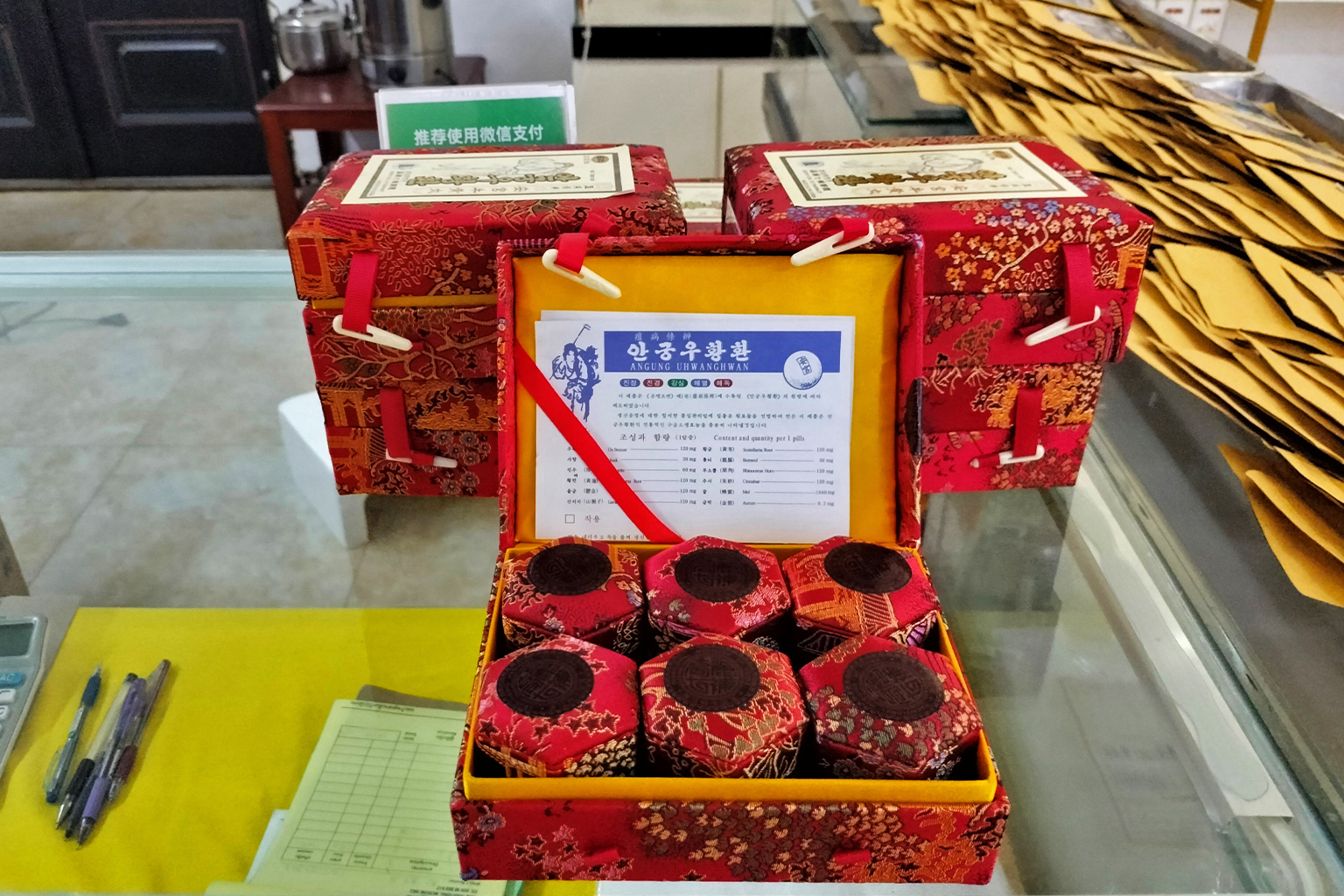
In every shop that Mongabay was able to enter, this layout — a room full of chairs ahead of the actual shop floor — was seen, along with the same photos depicting symbolic imagery of the China-Laos relationship.
According to Agent C’s investigators, purchases require a Chinese passport, and buyers are encouraged to buy and wear small items of jewelry during their return trips to China; however, for larger items, sellers offer a range of private courier options to deliver the products back to buyers’ homes in China. These deliveries violate both Laotian and Chinese law, although Mongabay was unable to verify whether purchased products actually arrive at the homes of buyers.
Somvang Phimmavong, director general of Laos’ Department of Forestry, told Mongabay via email that, since 2023, the China-Laos railway — which opened in December 2021 — had been fitted with customs scanner, its personnel had been trained to identify illegal wildlife products and there was real-time coordination with Chinese enforcement agencies.
“Removing CITES-listed species or their derivatives via this channel would be extremely difficult,” he said.
The railway’s cross-border service linking China to Laos began operating in April 2023, producing a tourism boom that saw the number of annual Chinese tourists rise from some 45,000 in 2022 to more than 1 million in 2024, surpassing pre-pandemic figures.
Mongabay’s reporter noticed, at both the Luang Prabang railway station and at Wattay International Airport in Vientiane, a handful of wildlife posters warning against traveling with wildlife products was visible, as was the small box of confiscated items on display.
Phimmavong told Mongabay that, in no uncertain terms, ivory and rhino horn are illegal to sell in Laos.
“Lao law and CITES rules strictly prohibit the sale of ivory, rhino horn, tiger parts, pangolin scales and other [CITES] Appendix-I specimens,” said Phimmavong. “Any claim of legal domestic origin is both misleading and criminal. Our enforcement teams continue market monitoring and seizures, despite the inherent challenges posed by unlicensed or concealed operations.”
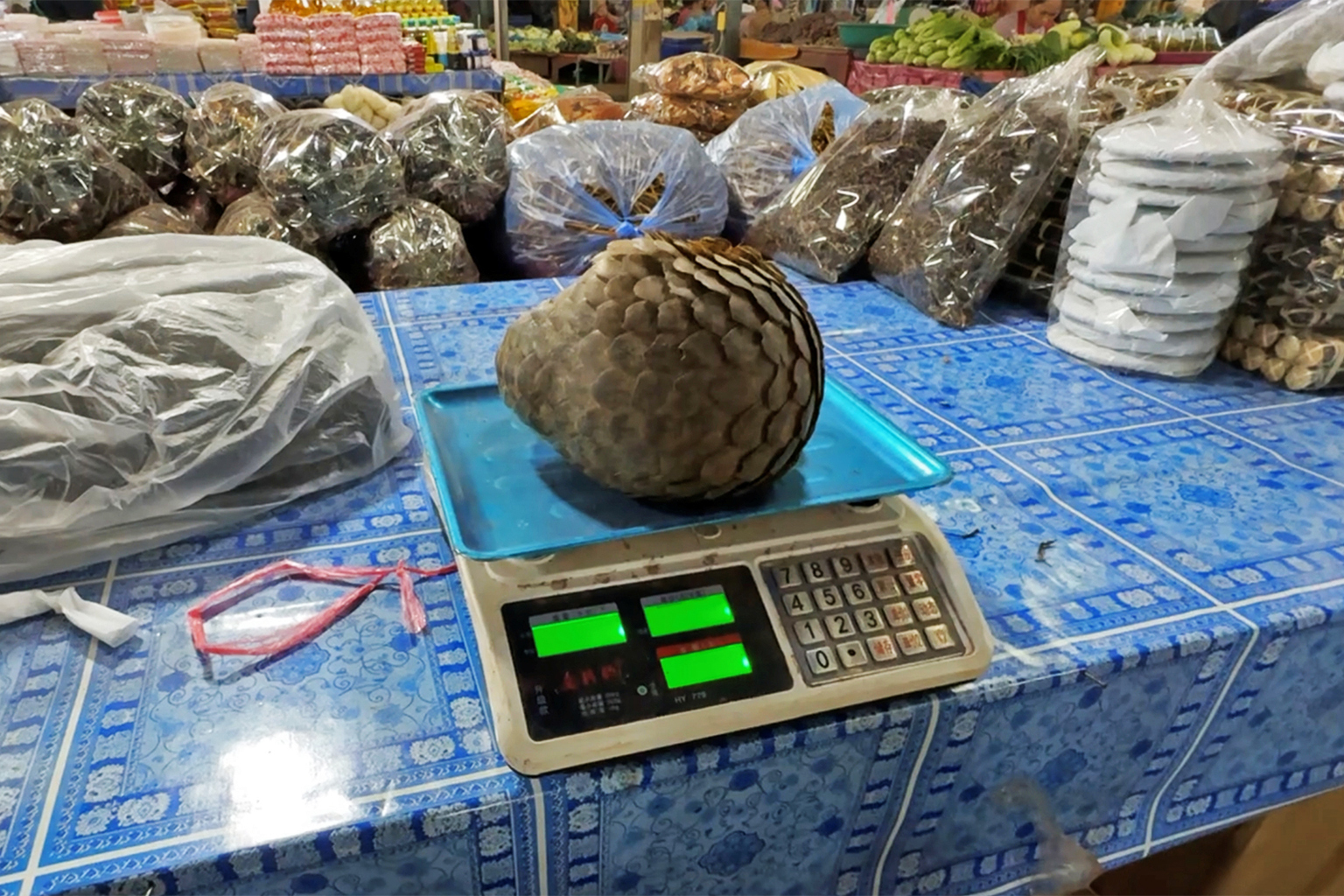
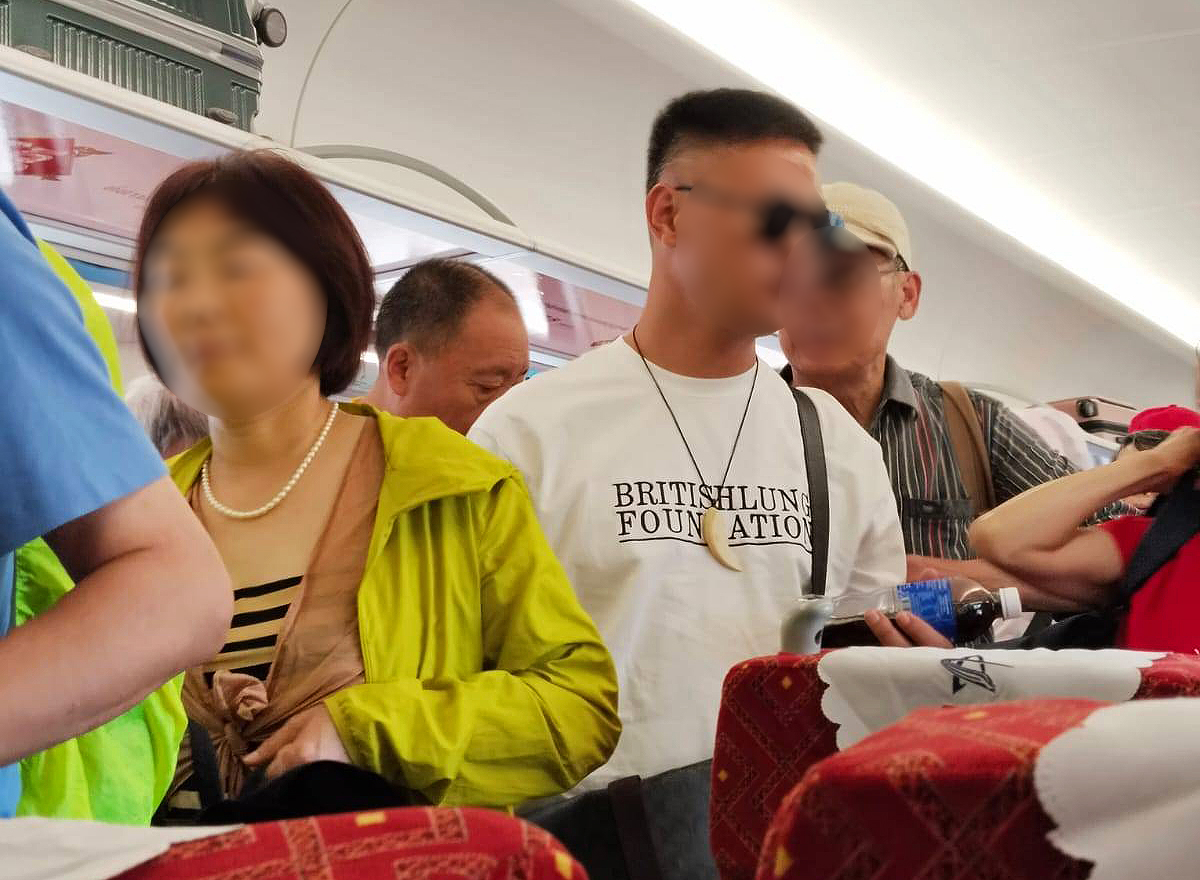
Inside Laos’ secretive wildlife shopping centers
Illegal or not, these products are there, for sale in Laos, across a number of shops that Laotian officials seemed unaware of. While security guards at most locations barred entry into the shops, many of which are vast, fenced-off compounds masquerading as cafés, jewelry shops or cultural centers, Mongabay was able to enter four separate shops that were left open and unguarded.
In Happy Garden Restaurant, also known as Hao Jie Jewelry, in Luang Prabang, Mongabay’s reporter was able to document the shop and its contents before the cleaning staff chased them out. Scores of glass cases were laid out like at a jewelry store, spread across a spacious room that was lined with bookshelves, artworks depicting elephants and monks blessing ivory, and imagery invoking Laos’ friendship with China.
Inside the glass cases was a huge selection of what has since been identified as ivory, ranging from bracelets and necklaces to larger carvings. Bags of pangolin scales adorned the bookshelves, alongside herbal medicines and Laotian coffee beans. All signage was written in Laotian and Chinese.
As Mongabay’s reporter was leaving, a group of what appeared to be middle-aged Chinese tourists were seen exiting the Happy Garden Restaurant, which sits adjacent to the jewelry store. Parked outside were two white minivans, numbered 1 and 2, both sporting Chinese writing on pieces of paper stuck to the inside of the windshields — suggesting that they were part of a package tour, which appear to be the only tourists allowed in.
Similarly, upon arriving at Ancient Giftshop — another location identified in Luang Prabang which also goes by Agarwood Museum and is situated next to a government office — Mongabay found the doors open with no security posted outside.
Passing through an empty foyer where the walls were covered with large artworks depicting smiling women kneeling beside elephants, caressing the elephant’s tusks — or in one case, a saffron-robed monk appearing to bless an elephant’s tusk — the dimly-lit lobby gave way to a bright shop floor similar to the one seen in Hao Jie Jewelry.
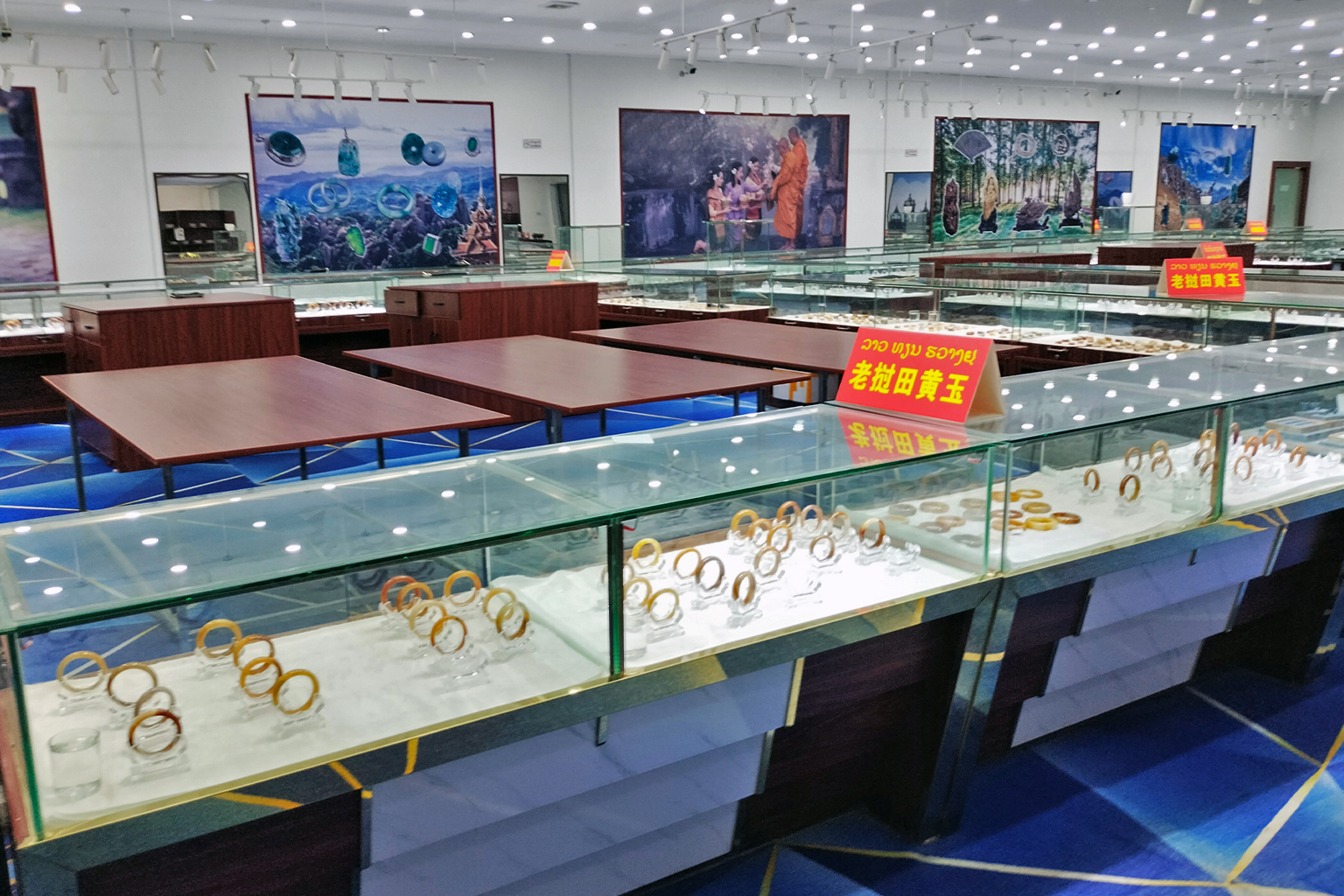
Mongabay’s reporter counted roughly 30 glass cabinets, each a meter (3.3 feet) long, sat atop wooden tables, all stocked with a range of wildlife products that were displayed on cushions. About 12 free-standing cubes of glass held larger ivory products, many of which appeared to be intricate decorative carvings made from a single tusk. Towering above the glass counters stood a large bandsaw, presumably used for carving ivory and other products.
A cleaner sat at one end of the room, absorbed by her phone, giving Mongabay a chance to document some of these products, which also appear to include yellow boxes that experts have since identified as likely being Angong Niuhuang Wan.
The next location Mongabay was able to enter in Luang Prabang had the largest assortment of wildlife products seen in person.
The Laos Traditional Medicine Hall is, from the outside, a small, unassuming front, but once visitors pass through a bamboo tunnel, the space expands out to a multi-story complex.
A similar foyer sported photos of the China-Laos railway, as well as an advert for Laos Herbal Medicine Development Co. Ltd. featuring a group photo of officials from the Laos Ministry of National Defense meeting the company’s staff and one of cutting a ribbon at the company’s opening ceremony.
The room was adorned with images of Chinese president Xi Jinping meeting Laotian officials, and a large advert for Angong Niuhuang Wan with images of a deer, a cow and a rhino next to an image of the distinctive yellow box.
With no staff in sight, Mongabay was able to document jewelry, pills, potions and herbs. Some of these appeared to be ginseng roots and dried mushrooms, but the more incriminating products on display in large metal trays included pangolin scales sold for 100 yuan (approximately $14), envelopes of crushed tiger bone, lotions containing Siamese crocodile fat, bear bile powder and a very specific brand of North Korean-made Angong Niuhuang Wan — the packaging of which boasted that each of the pills inside contained 120 milligrams of rhino horn.
Finally, Mongabay was able to briefly see inside one new location that, as of 2025, did not bear a name. Outside it were more white minivans and the same decorative elephant statues that had been seen at various other suspected locations. This location was by far the largest of those that Mongabay was able to enter. The two-story building, clad in bamboo, was laden with photos of Xi Jinping, rhinos and elephants, as well as Laotian monks.
Upon walking into the open store, Mongabay’s reporter found themselves in an expansive open-plan room full of glass cabinets displaying agarwood necklaces and bracelets, among other trinkets. A group of Chinese tourists wandered around the room, filming themselves and chatting with sales staff who, upon seeing Mongabay’s reporter, began talking among themselves excitedly in Chinese. Another staff member, holding a calculator and receipt book, ran over, telling Mongabay “No, no, no entry” and so Mongabay’s reporter left.
While no wildlife products were seen during this brief visit, the room was partitioned off into two sections, with the one seen by Mongabay only appearing to sell the distinctive agarwood products.
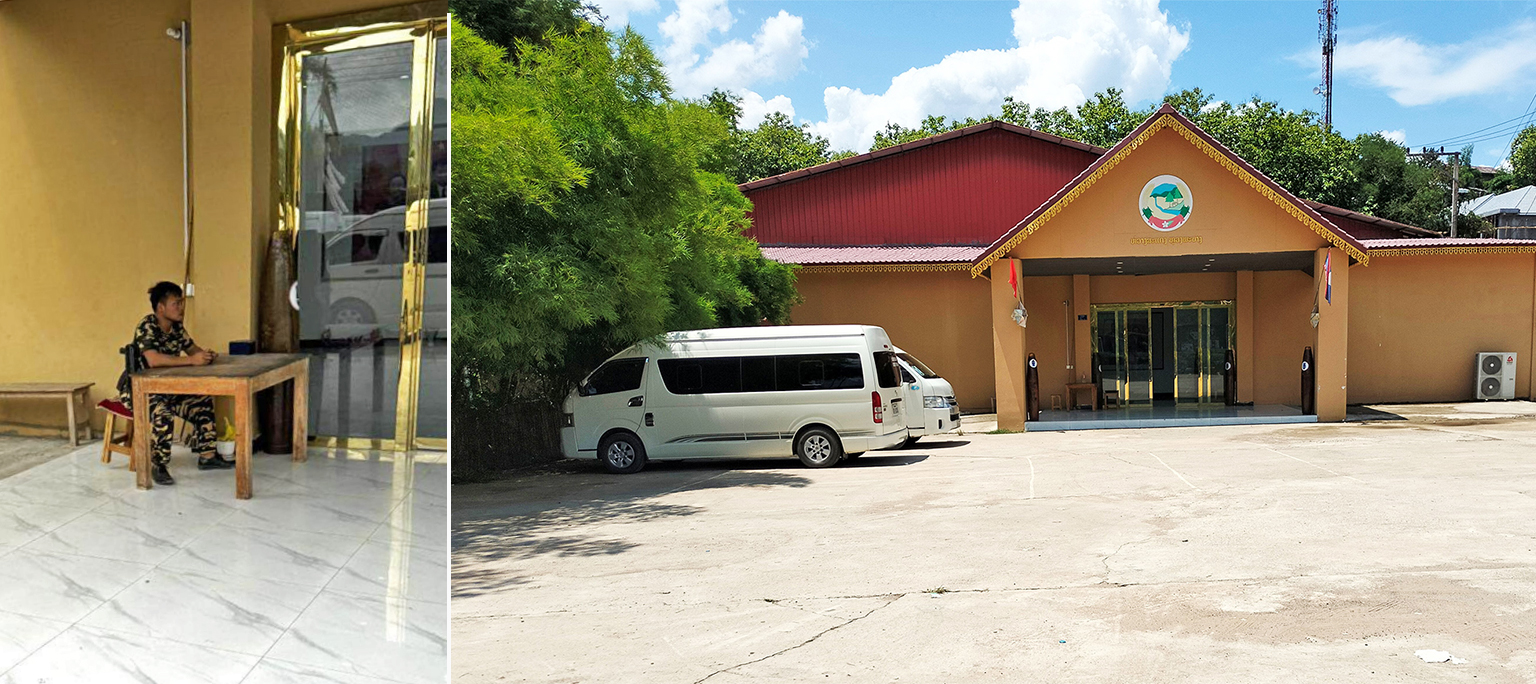
An online treasure trove of evidence
Accessing the wildlife product shops of Luang Prabang and Vientiane has proven notoriously difficult for investigators. The tours only take middle-aged Chinese nationals, often starting at southern China’s Kunming city, where the China-Laos railway begins. This requires those embarking on the package tours to present passports (which are also needed for purchases in the shops).
Previously, it was understood that only Chinese nationals could enter the shops, but now, only Chinese nationals who have booked a participating package tour can do so. Even then, the sellers working at these shops have been known to grow suspicious of certain customers who have then been barred from entering subsequent shops along the tour route, suggesting many of these shops work as part of a network.
Compounding these risks are the claims made by the staff at various shops in Laos, who told undercover investigators from Agent C that their shop is either owned or affiliated with branches of the Laotian government.
“The department [of forestry] has no record or knowledge of any formal link between these shops and any Lao government entity, including the military,” said Phimmavong. “Claims that shop staff wear military uniforms and are armed are highly concerning.”
However, as Agent C’s unpublished 2024 report noted, the alleged government and military connections could simply be a narrative aimed at convincing elderly Chinese tourists — and would-be buyers — that the shops are legitimate and the products legal.
Combined, these factors make accessing the shops challenging, but, fortunately, Chinese tourists have themselves uploaded volumes of evidence to Chinese social media platforms like TikTok, known in China as Douyin.
GI-TOC identified nearly 30 videos uploaded from 2023 to 2025 showing the insides of numerous shops selling illegal wildlife products in Laos, with at least 19 of those videos being geolocated to specific shops. Mongabay was able to verify on the ground that these shops still exist and are continuing to function.
While the trade may fluctuate seasonally, the markup on products seen for sale on Douyin suggests that operating these shops is lucrative. Rhino horn, which is estimated to sell for around $17 per gram across Asia is sold at a staggering $600 per gram, while receipts seen by Mongabay and GI-TOC show that one customer paid nearly 54,810 yuan (about $7,600) for rhino horn and 3,500 yuan (about $500) for Angong Niuhuang Wan pills.
Endangered and on sale
Although the sourcing of many products documented by investigators remains somewhat unclear, Laos was sanctioned by CITES, or the Convention on International Trade in Endangered Species of Wild Fauna and Flora, in November 2023 — largely in response to the continued farming of tigers and bears to supply the wildlife trade — and as such is banned from trading in all CITES-listed species, including those seen for sale across Luang Prabang and Vientiane.
Asian elephants (Elephas maximus) and African savanna elephants (Loxodonta africana) are both listed as endangered on the IUCN’s Red List, while the African forest elephant (Loxodonta cyclotis) is critically endangered — all are hunted and killed for their tusks, which make up the bulk of ivory products sold globally. CITES banned the commercial trade of ivory in 1989, but today, best estimates suggest there are fewer than 50,000 Asian elephants left globally — with most (around 30,000) found in India. In 2016, the IUCN estimated that African elephant species numbered somewhere in the region of 415,000, but despite international efforts, the ivory trade continues to see elephants around the world killed.
The critically endangered black rhino (Diceros bicornis) is commonly poached across Africa, with the species accounting for an estimated 95% of rhino horn trafficked from Africa to Southeast Asia. Much of these products come in the form of traditional medicines with limited proven scientific benefits. Likewise, the Sunda pangolin (Manis javanica) and other species of pangolins — often referred to as the most trafficked animal in the world — are critically endangered due to widely-held beliefs regarding the medicinal properties of its scales, despite the fact that they’re made of keratin.
“What we’re seeing in Laos lately with these package tours is not normal,” said one wildlife trade specialist, based outside of Laos, who requested anonymity due to their ongoing work in the region. “It’s very alarming and out of control. We do not know of anywhere else in the world right now where tour groups can roll up and be offered such a huge and steady quantity of prohibited wildlife items, especially ivory and rhino horn.”
Many of the products documented by Mongabay, GI-TOC and Agent C were likely trafficked from Africa, according to multiple specialists that reviewed this case, although some noted the pangolin scales were probably sourced from Southeast Asia, while North Korea was supplying the Angong Niuhuang Wan through China.
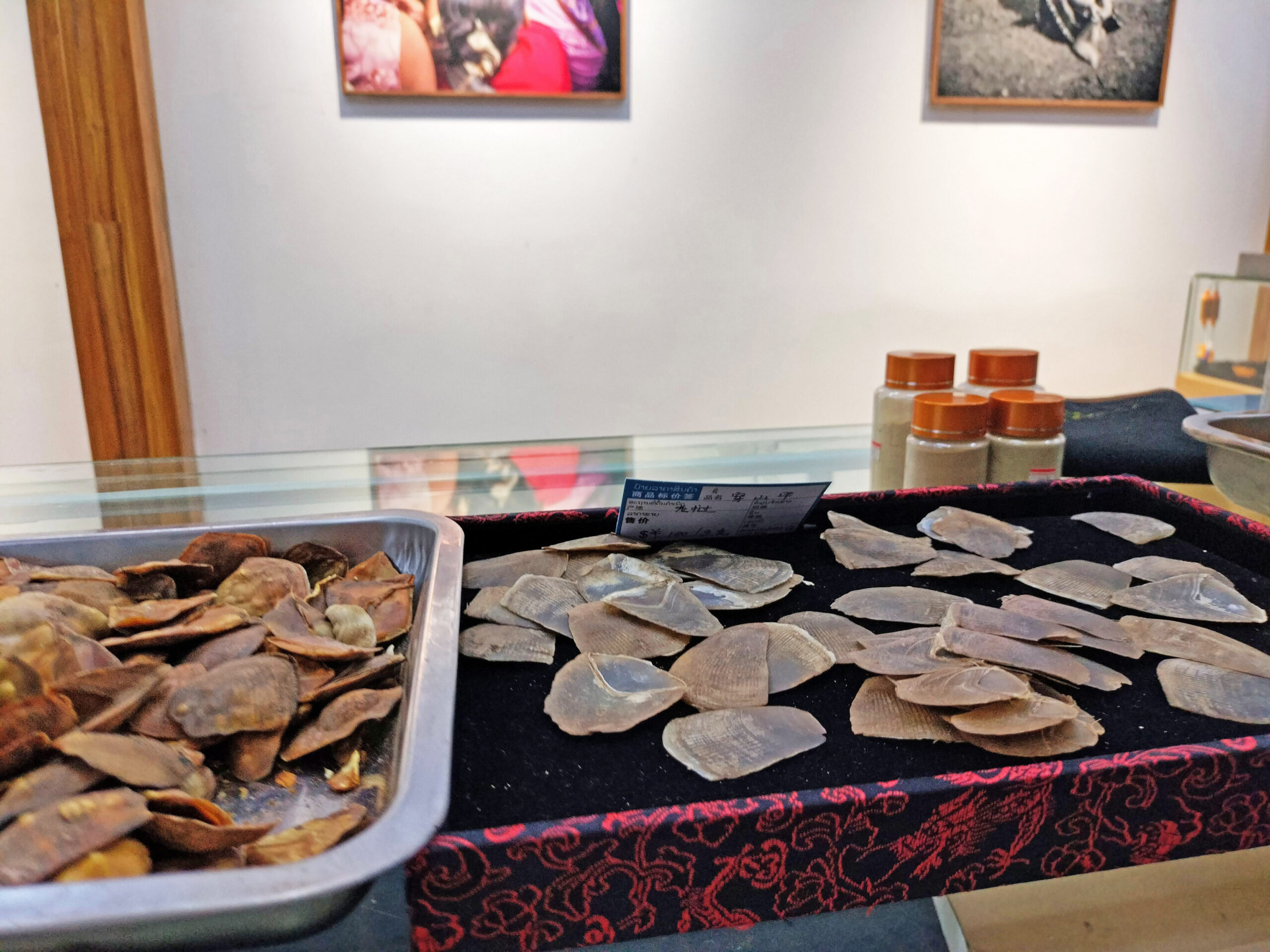
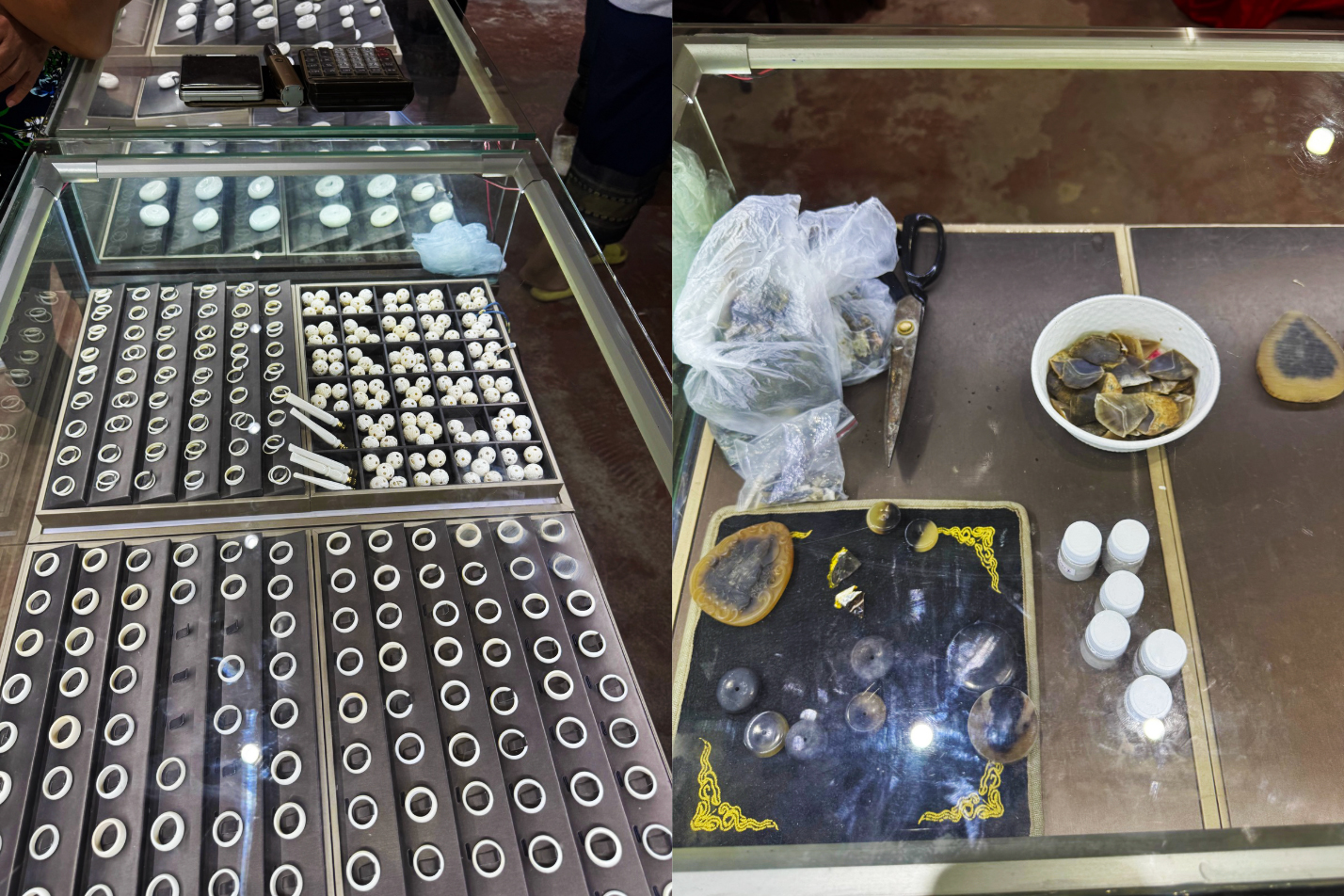
One specialist offered an explanation for how these products were able to enter Laos, noting that shipments often come from across Africa, entering Southeast Asia through Thailand or Malaysia, but are labeled as bound for Laos, meaning that they’re not inspected in transit.
“Cargo in transit through Thailand and Laos does not get inspected unless there’s solid intel suggesting there’s dangerous or illegal cargo inside, and only then will customs break the seal and look inside,” the specialist told Mongabay.
While some cargo is occasionally X-rayed — a method that sometimes fails to identify illicit wildlife products — cargo in transit for a third country is exempt from this measure, meaning Thai or Malaysian authorities would not be able to inspect shipments coming through their ports if the shipment is bound for Laos, according to the specialist.
Phimmavong, of Laos’ Department of Forestry, told Mongabay that he fully acknowledges the gravity of the matter and is committed to safeguarding biodiversity and complying with CITES obligations, pointing to multiple raids, arrests and convictions in relation to wildlife crimes over the course of 2024.
“We are actively preparing for the next CITES Standing Committee with full confidence that our progress will support the removal of current trade suspensions,” he continued. “Laos has implemented legal reforms, enforcement strategies, and institutional improvements aligned with CITES requirements. Allegations such as those you have raised will be fully investigated in accordance with the law.”
Banner image: Thai authorities seized more than 200 kilograms (440 pounds) of ivory hidden in luggage shipped out from Congo to Laos via Bangkok in 2015. Image by AP/Sakchai Lalit.




